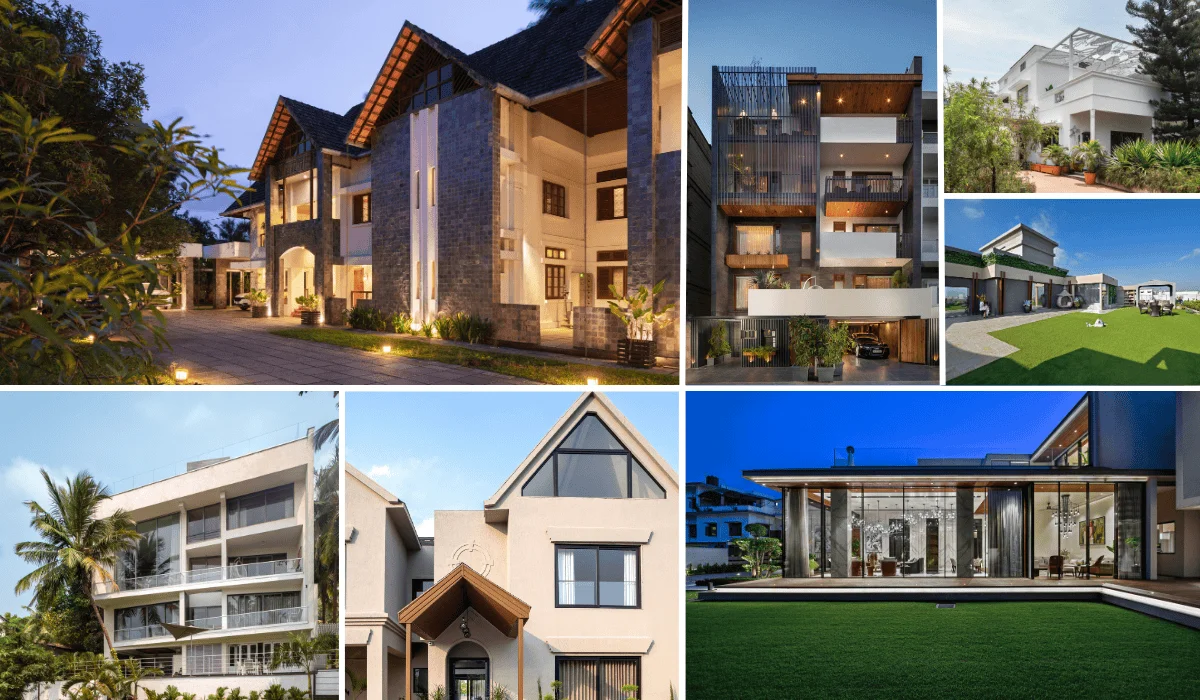Over the years, ‘innovative design’ has become a defining tenet for sustainable development in varied architectural typologies. With the irreversible threat of climate change, we are now predictably seeing massive growth in innovative design being implemented through sustainable and renewable energy resources. To maximise energy efficiency, contemporary residential buildings must be thoughtfully designed to provide optimal sustainability. As sustainability trends rapidly influence consumer choices, on-site renewable energy production is a foreseeable requirement in the real estate sector. As more and more people are shifting away from standard building structures and instead opting for a sustainable yet practical design approach, it is crucial to integrate dual-purpose materials like vertical green facades, recycled polymers, and smart glass. Simultaneously, high-rise residential buildings can benefit from advanced glazing technologies, passive design strategies, and smart materials to enhance energy efficiency, ensure optimal daylight control and naturally improve thermal control.

Harnessing Renewable Energy Through Technological Advancements
Given India’s unique climatic and geographical conditions, implementing renewable energy techniques in Indian architecture is highly feasible. While encouraging creative ideas, we should promote multifunctional design elements that harness natural resources such as sunlight, wind, and humidity to make buildings self-sufficient and energy-efficient. Seasonal wind patterns, for instance, offer the potential to tap into wind energy and hydropower. In recent years, one notable advancement in sustainable technology has been the widespread adoption of photovoltaic solar panels, which quietly convert sunlight into clean, renewable electricity, both on rooftops and as ground-mounted systems. However, we must explore inventive ways to integrate them into building facades, considering the amount of sunlight vertical surfaces receive. With improved efficiency and affordability, solar water heaters also prove to be a practical means of generating hot water for residential use in urban areas. Small-scale wind turbines can effectively harness wind energy in areas with consistent, strong winds, providing an additional source of renewable electricity for residential properties.

While solar energy is one of the promising renewable energy sources in Indian parameters, spatial requirements for large-scale solar installations are limited. To address this, facades should be designed to support vertical gardens, creating modules that facilitate easy maintenance, water supply, and growth materials. Moreover, there is significant potential for using recycled polymers derived from waste and well-equipped construction materials for advancements in construction methodologies. Future-proofing buildings with such innovations can ensure the collective global goal of achieving net-zero carbon emissions by 2050.
Necessitating Eco-consciousness Using Climate Responsive Materials
The foundation of any sustainable measure lies in the materials we use. For instance, bio-composting and using natural materials in construction practices have become the cornerstone of cost-effective and environmentally friendly buildings. Similarly, geothermal or ground-source heat pumps can be installed to efficiently regulate indoor temperatures by tapping into the earth’s stable underground heat. Additionally, thermal insulation on the roofs of residences effectively curtails heat gain, enhancing overall energy efficiency in homes. It is also imperative to incorporate rainwater harvesting systems to conserve water for non-potable uses like irrigation, toilet flushing, and laundry. Moreover, integrating greywater management, not only on construction sites but also in day-to-day activities, further promotes sustainability. Harnessing such sustainable practices on a larger scale can mark a significant leap towards a cleaner, more sustainable urban future for the well-being of future generations.


Envisioning a Sustainable Future by Devising Responsible Design Strategies
Sustainability and the power of utilising renewable energy resources as a design tool to address challenges and elevate the quality of life must be central to our sustainability goals across all practices. Incorporating sustainable design principles mandates the thoughtful consideration of natural elements that serve a purpose and respect the environment.
In the face of rapid urbanisation, the success of sustainable residential development hinges significantly on effective urban growth management. This is particularly critical in low-income and lower-middle-income countries, where urbanisation is projected to be the fastest. With the help of technology, we must systematically devise practical and effective means to eliminate waste, curtail energy and resource consumption, retrofit and repurpose structures and landscapes, and apply nature-based solutions to restore habitats. Concurrently, championing participatory planning and community engagement becomes indispensable in addressing pressing climate and biodiversity emergencies.

While responsible design principles remain the foundation of a sustainable building, embracing innovative strategies and harnessing the most effective tools during construction is just as essential in achieving the long-term functionality of residential development in the future. Achieving sustainable goals is not only about the work we do and the environments we help design; it extends to our work processes as well. As a collective effort, the future of highly efficient residential growth in India must be fuelled by the 2030 sustainable agenda. We must embrace innovative technologies in the construction of new-build projects that will further become one of the mainstays of our work.

Biltrax Construction Data is tracking 29,000+ projects on their technology platform for their clients.
Get exclusive access to upcoming projects in India with actionable insights and gain a competitive advantage for your products in the Indian Construction Market.
Visit www.biltrax.com or email us at contact@biltrax.com to become a subscriber and generate leads.
Disclaimer: The information contained herein has been compiled or arrived at, based upon information obtained in good faith from sources believed to be reliable. All such information and opinions can be subject to change. The image featured in this article is for representation purposes only and does not in any way represent the project. If you wish the article to be removed or edited, please email editor@biltrax.com.
Discover more from Biltrax Media, A Biltrax Group venture
Subscribe to get the latest posts sent to your email.






















